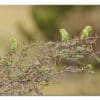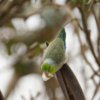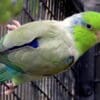Pacific Parrotlet
Also known as:
Celestial Parrotlet, Lesson's Parrotlet
Also known as:
Celestial Parrotlet, Lesson's Parrotlet

Forpus

coelestis
Size:
12.5 cm (4.8 in)
Weight:
33 g (1.1 oz)
Subspecies including nominate:
one
Colour Adult:
Male-yellow/green forehead, crown, cheeks, and throat; blue line behind eye; blue/grey occiput and nape; green/grey mantle, upper back and lesser wing coverts to scapulars and inside secondary feathers; dark cobalt blue lower back, rump, lesser underwing coverts and axillary feathers; dark blue primary and secondary coverts, outer secondary feathers and bases of inner primary feathers; underparts green washed with grey on flanks and sides of breast. Beak horn in colour. Eye brown. Female-green on wings where blue is in male; blue tinge behind eye and on rump; blue/grey occiput and nape; face less yellow; grey wash on underparts absent.
Colour Juvenile:
As in adult female but upperparts green; blue/grey on occiput and nape minimal or absent; juvenile male blue mixed with green on rump.
Call:
Calls are high-pitched and rapid. In flock situation this produces a constant chattering.
More Information:
Content Sources:
CITES
BirdLife International
Cornell Lab of Ornithology/Birds of the World
Parrots: A Guide to Parrots of the World, Juniper and Parr, 1998
Parrots of the World, Forshaw and Cooper, 1977. 2010 edition
Parrots of the World, Forshaw, 2006.
Parrots in Aviculture, Low, 1992.
Psittacine Aviculture, Schubot, Clubb and Clubb, 1992.
Captive Status:
Quite common.
Longevity:
Up to 25 yrs.
Housing:
Walk-in enclosure, minimum length 2.1 m (7 ft), or indoor aviary minimum length 1.8 m (6 ft).
Diet:
Small seed mix such as: canary, millet and smaller amounts of oats, buckwheat, safflower and hemp; limited sunflower seed; spray millet; green leaves such as: Swiss chard, lettuce, dandelion, chickweed, sowthistle; seeding grasses; rearing food made from: hard-boiled egg, wholegrain bread and carrot, all ground to crumbly consistency; apple and other fruits if taken; complete kibble.
Enrichment:
Swings and ropes; puzzle and foraging toys; bird-safe wooden chew toys and branches (fir, pine, heat-sterilized pine cones). Also like to bathe.
Nest Box Size:
Budgerigar nest box 6″ x 6″ x 6″ (15.2 cm x 15.2 cm x 15.2 cm).
Clutch Size:
4-6
Fledging Age:
4-5 weeks
Hatch Weight:
—
Peak Weight:
—
Weaning Weight:
—
World Population:
Unknown but described as common, decreasing.
IUCN Red List Status:
Least Concern
CITES Listing:
Appendix II
Threat Summary:
A BirdLife “restricted-range” species. Is generally common. Is considered to have a medium dependency on forest habitat; tree cover is estimated to have declined by 4.5% within its mapped range over the past 10 years. Therefore it is tentatively suspected that this may have led to a 1-19% decline in the species’ population size over the same time frame.
Range:
Found on the Pacific slopes of Andes from Borbón, Esmeraldas, NW Ecuador, south to Trujillo, La Libertad, and the upper Río Marañón valley, NW Peru; possibly southern Nariño, SW Colombia and Bagua area, Ríos Marañón, and Utcumbamba valleys, NW Peru.
Habitat:
Seen up to 800 m (2624 ft) in dry wooded areas such as thorny scrub, deciduous forest, dense cactus scrub with balsa trees, banana and mango plantations, riparian vegetation, irrigated fields and gardens; also reported in coastal mangroves.
Wild Diet:
Feeds on grass seeds, berries, Tamarindus fruits and cactus fruits.
Ecology and Behaviour:
Forages for food in vegetation and on the ground. Groups in flight call continuously. When perched, calls are more subdued.
Clutch and Egg Size:
4-6 ovate eggs, 19.5 x 16.0 mm (0.7 x 0.6 in)
Breeding Season:
January-May. Nest is in any natural or artificial cavity including holes in trees, branches, fence posts, telephone poles, ends of pipes and bamboo rafters; also old mud nests of Pale-legged Hornero (Furnarius leucopus) and large stick nests of Necklaced Spinetail (Synallaxis stictothorax) and Fasciated Wren (Campylorhynchus fasciatus).
Related Links:
—
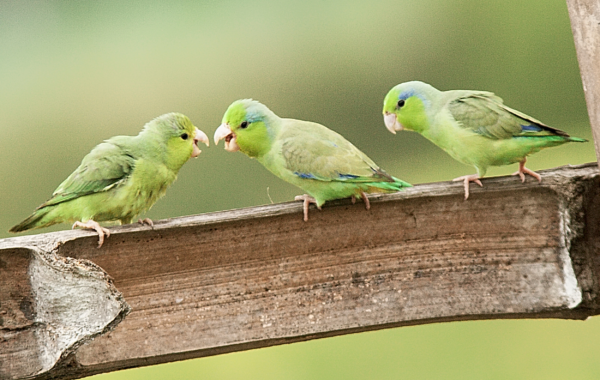
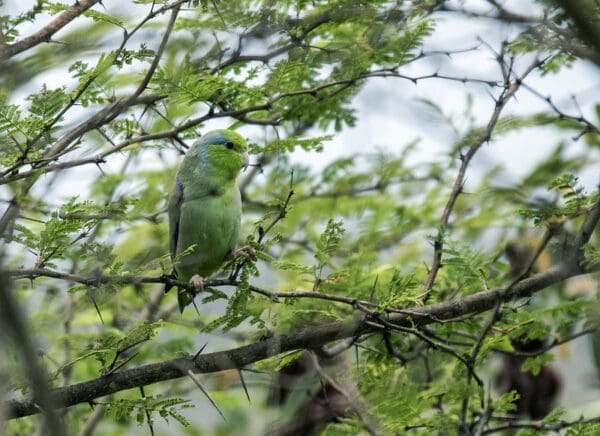

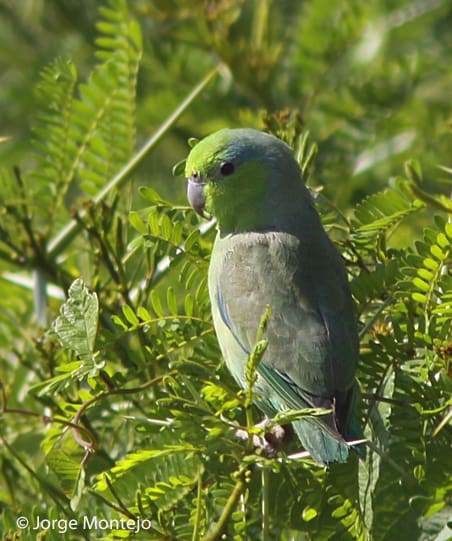
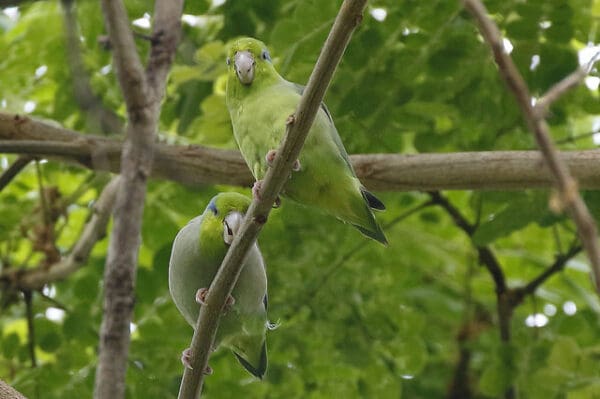
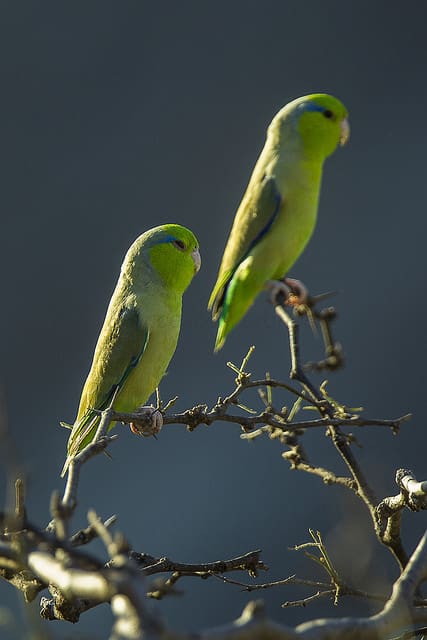
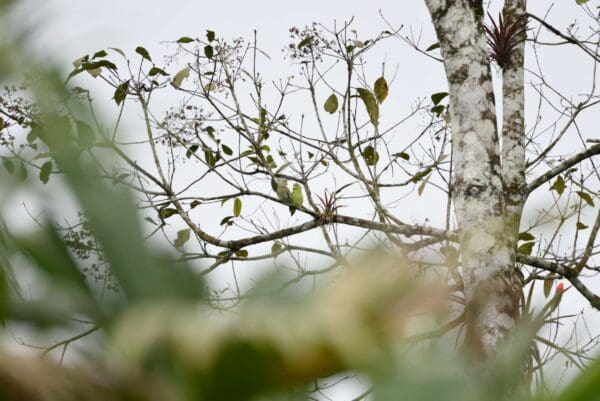
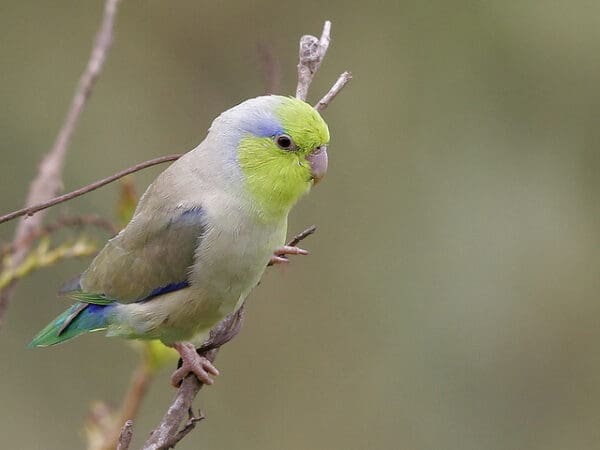
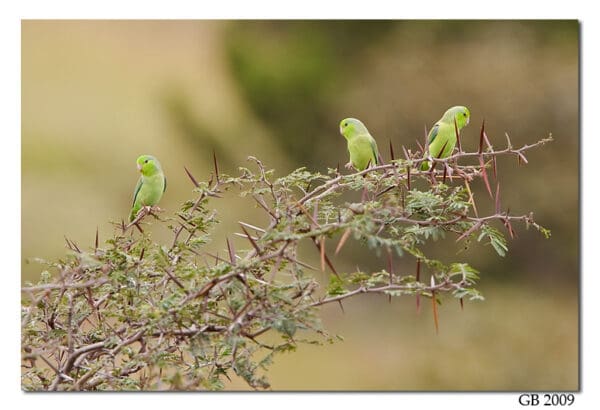
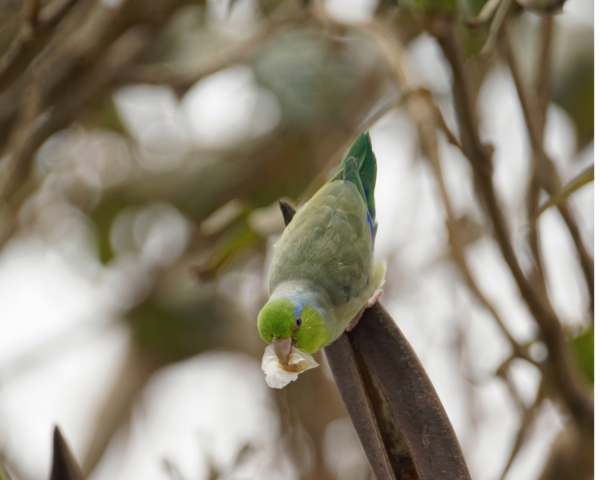
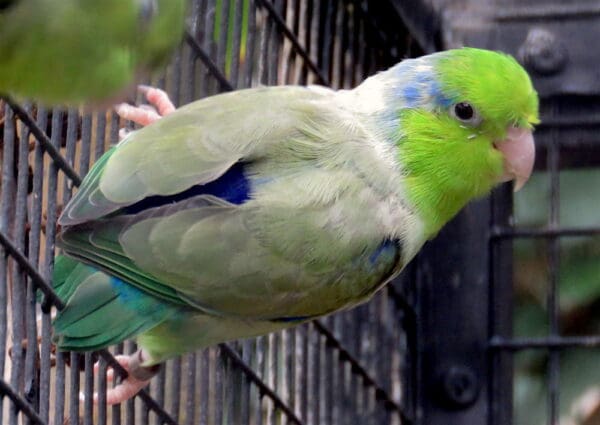
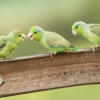
![© Nick Athanas [CC BY-SA 2.0] via Flickr A wild Pacific Parrotlet perches in a tree](https://parrots.org/wp-content/uploads/2023/01/wpt_Pacific-Parrotlet_1370-11-100x100.jpg)
![© budgora [CC BY-SA 2.0] via Flickr A wild Pacific Parrotlet perches on a twig](https://parrots.org/wp-content/uploads/2023/01/wpt_Pacific-Parrotlet_1370-10-100x100.jpg)
![© Jorge Montejo [CC BY-SA 2.0] via Flickr A wild Pacific Parrotlet perches in a tree](https://parrots.org/wp-content/uploads/2023/01/wpt_Pacific-Parrotlet_1370-9-100x100.jpg)
![© Rolf Riethof [CC BY-SA 2.0] via Flickr Wild Pacific Parrotlets perch on a branch](https://parrots.org/wp-content/uploads/2023/01/wpt_Pacific-Parrotlet_1370-8-100x100.jpg)
![© Francesco Veronesi [CC BY-SA 2.0] via Flickr Wild Pacific Parrotlets perch on a bare tree](https://parrots.org/wp-content/uploads/2023/01/wpt_Pacific-Parrotlet_1370-6-100x100.jpg)
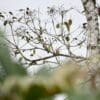
![© peterdehaas2317 (pacific-parroletmale5047 Uploaded by Snowmanradio) [CC BY 2.0] via Wikimedia Commons A wild male Pacific Parrotlet perches on a branch](https://parrots.org/wp-content/uploads/2023/01/wpt_Pacific-Parrotlet_1370-3-100x100.jpg)
